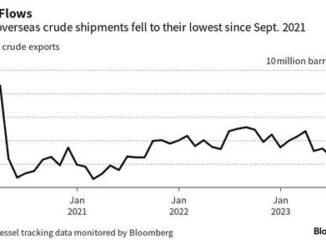
It’s no secret that fossil fuels are still going strong, as we discussed last month. But a new United Nations-backed report paints an alarming picture of how dramatically coal, oil and gas production is expected to grow in the coming years.
If current projections hold, the United States will drill for more oil and gas in 2030 than at any point in its history, our colleague Hiroko Tabuchi reports. So will Russia and Saudi Arabia.
In fact, almost all of the top 20 fossil fuel-producing countries plan to produce more oil, gas and coal in 2030 than they do today. If those projections hold, the world would overshoot the amount of fossil fuels consistent with limiting warming to 2 degrees Celsius — the level scientists say would result in vastly more life-threatening heat waves, drought and coastal flooding.
“Governments are literally doubling down on fossil fuel production; that spells double trouble for people and planet,” António Guterres, the United Nations secretary general, said in a statement accompanying the report. “We cannot address climate catastrophe without tackling its root cause: fossil fuel dependence.”
Country by country
Some of the increases are projected to take place in several large democracies whose leaders have pledged to stop adding carbon dioxide to the atmosphere.
-
In the United States, where President Biden campaigned under a “no more drilling on public lands” slogan, the Willow project will extract 600 million barrels of oil from pristine federal land in Alaska. The U.S. is now the world’s biggest crude oil producer, and is ramping up exports of natural gas. Its two biggest oil companies are buying up smaller rivals in a bet that fossil fuels will remain profitable for decades to come.
-
Brazil, where President Luiz Inácio Lula da Silva has vowed to “prove once again that it’s possible to generate wealth without destroying the environment,” plans to increase its oil production by 63 percent and to more than double its gas output in the next decade.
-
India, which has promised to significantly expand renewable energy production, will more than double its production of coal, the dirtiest fossil fuel, by 2030.
-
Canada, which wrote its 2050 net-zero commitment into law, is on track to boost its oil output by 25 percent in the next 12 years.
Meanwhile, major fossil fuel producers like Saudi Arabia and Russia seem to be vying to become the last ones standing as the world transitions to cleaner energy sources.
Saudi Arabia, as Hiroko reported last year, has an “aggressive long-term strategy to keep the world hooked on oil for decades to come and remain the biggest supplier as rivals slip away.” The country plans to increase production by up to 47 percent by 2050.
Only a handful of countries among the biggest fossil fuel producers plan to reduce their total output by 2030, including the United Kingdom, Germany, Norway and China. China remains by far the world’s biggest fossil fuel emitter, largely through oil, gas and coal that it imports from other countries.
‘We need credible commitments’
As global leaders gather in Dubai for the United Nations’ climate talks known as COP28 later this month, there will once again be calls for collective action to reduce planet-warming emissions and expand renewable energy.
“COP28 must send a clear signal that the fossil fuel age is out of gas — that its end is inevitable,” Gutteres said. “We need credible commitments to ramp up renewables, phase out fossil fuels, and boost energy efficiency, while ensuring a just, equitable transition.”



